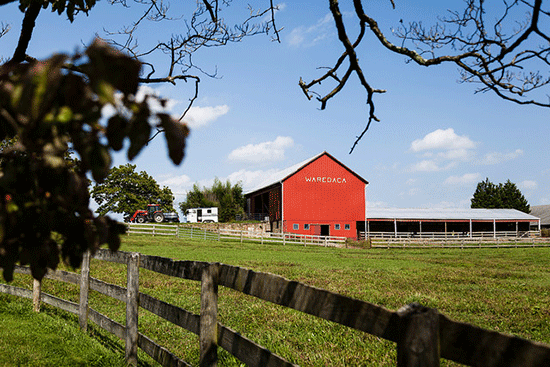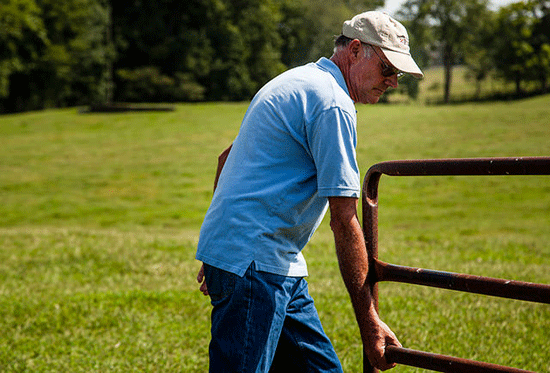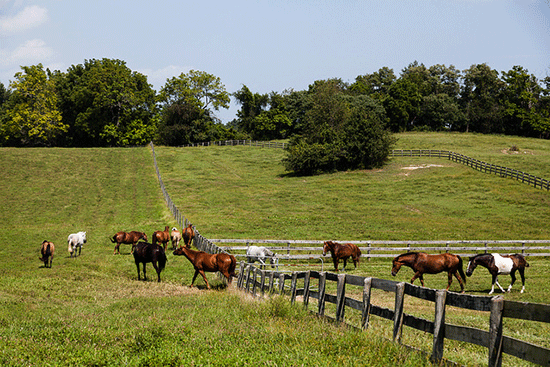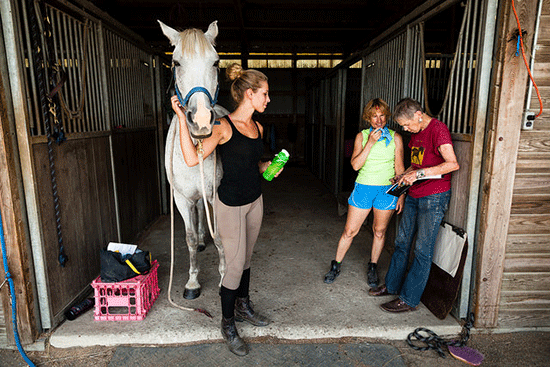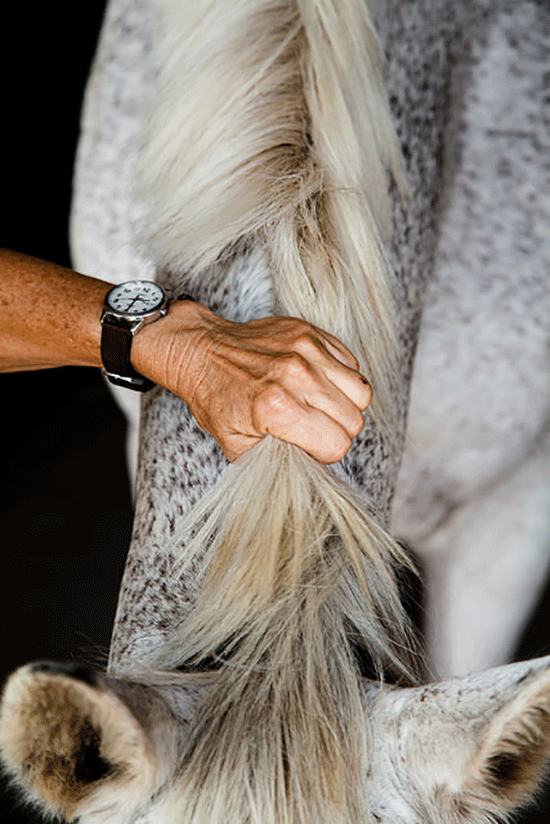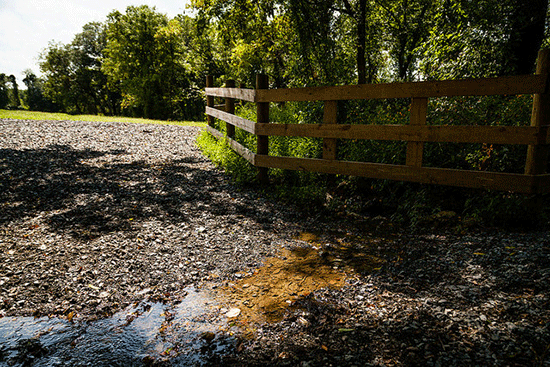Manure management strategies for horses
EAST LANSING, MI
Piling horse manure up into a miniature mountain and leaving it be no longer flies.
"Back in the day, we all did this. Nobody thought anything of it," Jamie Cohen, University of Florida farm outreach coordinator, said in a recent My Horse University webinar, "Horse Management Strategies To Help Your Horse, Help the Farm and Protect Our Water".
The program was co-hosted by Equine Land Conservation Resource, a national non-profit organization working to keep land open and accessible for horses and horse-related activities.
Old manure practices need to change, Cohen said, urging every horse owner to develop a manure plan now. "Legislation is coming, if your state doesn't have it already, so make this a priority," she noted.
A horse makes about 50 pounds of manure every day. Properly managing that manure and pastures will prevent nutrients in manure and urine from entering ground and surface waters.
Best management practices can be used to help a farm flourish and stay productive, while protecting water. BMPs are common-sense, cost-effective, science-based techniques that can be used to keep horses, farms and water resources at their best, said Cohen, who also serves as technical resource for Equine Land Conservation Resources.
"It's just good management. It's little steps that we all can do every day," she said.
Fertilization becomes a big problem when nutrients are not utilized correctly. Adding too much or the wrong type of fertilizer can prevent proper nutrient uptake by pasture grasses. If the soil of the pH is wrong, grass and weeds will be unable to utilize it. "This all means wasted money and excess nutrients to the aquifer," Cohen pointed out.
Overstocking the land is another issue. It destroys the grass and leads to nutrient excesses and increased soil erosion that can seep into ground and surface waters. The damage decreases property value and land usefulness, while increasing upkeep and required spending.
The nitrogen from horse manure and urine can increase algae growth, harming aquatic life and potentially making the water undrinkable. "Use this rule of thumb: if it touches the ground, it will eventually reach the aquifer," Cohen advised.
On the other hand, good waste management can help improve soil and water quality, leading to improved forage and better nutrient availability.
Options
Spreading fresh manure, gathering it in a dumpster, and composting it are all potentially viable options, depending on the farm's particular situation.
When spreading fresh manure, keep it within acceptable rates. "Don't spread so thickly that the grass is covered. That's not effective spreading and you're not helping the health of the grass," Cohen pointed out.
Don't spread manure or compost on hills or near rivers, and keep records, whether spreading on the farm or hauling the manure away from the farm. "It's a good farm practice, period, and it provides a record of how you are managing," Cohen said. "We need to be proactive."
On the down side, spreading fresh manure won't stop weed seeds and it won't help pastures like composting can, she added.
Poor, sandy and degraded soils hold forage poorly and run-off easily, Cohen pointed out, while spreading composted manure provides organic matter that can really help to improve soils by retaining more moisture and sustaining forage better.
Composting is worth the effort
Compost is a mixture of decaying organic substances that contains beneficial microbes and fungi. It will improve soil health, decrease the amount of water soil needs and be a slow release fertilizer. It is a tremendous soil amendment, worth good money, and helps to protect ground and surface waters, Cohen said.
Composting on-site can be easily set-up and managed. Besides the "fantastic" benefits it offers soil, composting can decrease the volume of manure and matter by over 30 percent, kill up to 90 percent of weed seeds and reduce parasitic worms.
There are several types of composting systems. Anaerobic composting is done in a vessel, while aerobic digestion composting uses forced or static air in bins or windrows.
"You can go fancy with an O2 system or you can go simple by just putting a little pad down. There are lots of options," Cohen noted.
One handsome O2 system uses used forced air with a small blower to push air through PVC pipes into bins, while a static air composting system uses pipes drilled with air holes that are inserted into piles of composting materials to eliminate the need for turning.
She cited a good set-up, costing about $250 to construct, that had a Plexiglas hinged roof over a series of three bins, removable front slates from old barn boards, and static air tubes for additional air infusion into the composting material.
The bins can also be made big enough to accommodate the bucket of a front end loader.
Manure composting bins can be tricked out with concrete flooring to stop leaching and tarps to shield the pile from excess rainwater and at the desired moisture level of a wrung-out sponge. If your horse barn has automatic waterers, add the waste water to the compost pile, Cohen suggested.
Stockpiling manure, leaving it and not managing it in any way, is not really composting, Cohen pointed out. Composting requires management.
Windrow composing is a great system, but it can be an expensive option. The windrowed materials can be turned with a compost turner or a front-end loader.
Dry lot management
Creating a dry lot offers many benefits. It makes a good "sacrifice area", thereby saving other pastures and is good for particularly good for horses on a limited caloric intake or just off stall rest. It should be situated close to the barn for easy management and shouldn't be too large.
Since there is no plant material to uptake the nutrients from manure and urine, make it a habit to regularly pick out the manure to keep it clean.
Horses should not be grazing a pasture below three inches in height because it will rip the grass out of the ground and denude the root below, Cohen said. "Shift your horses onto the dry lot when pasture length gets low or it will cause the demise of your paddocks," Cohen pointed out.
It's also important to test the soil every two or three years to plan proper applications of fertilization, control weeds and never mow paddocks below five inches in height.
Resources
For more information on BMP, check out the ELCR's BMP guide, "Best Management Practices Can Help Your Bottom Line: A Guide to BMP for Horse Properties" at http://elcr.org/
For conservation assistance and information about cost-sharing, visit the Natural Resource Conservation Service site at www.nrcs.usda.gov, and check your local Extension office to learn about state and local legislation.
For more information on composting, visit eXtension.org's manure management page at www.extension.org/pages/25674/




